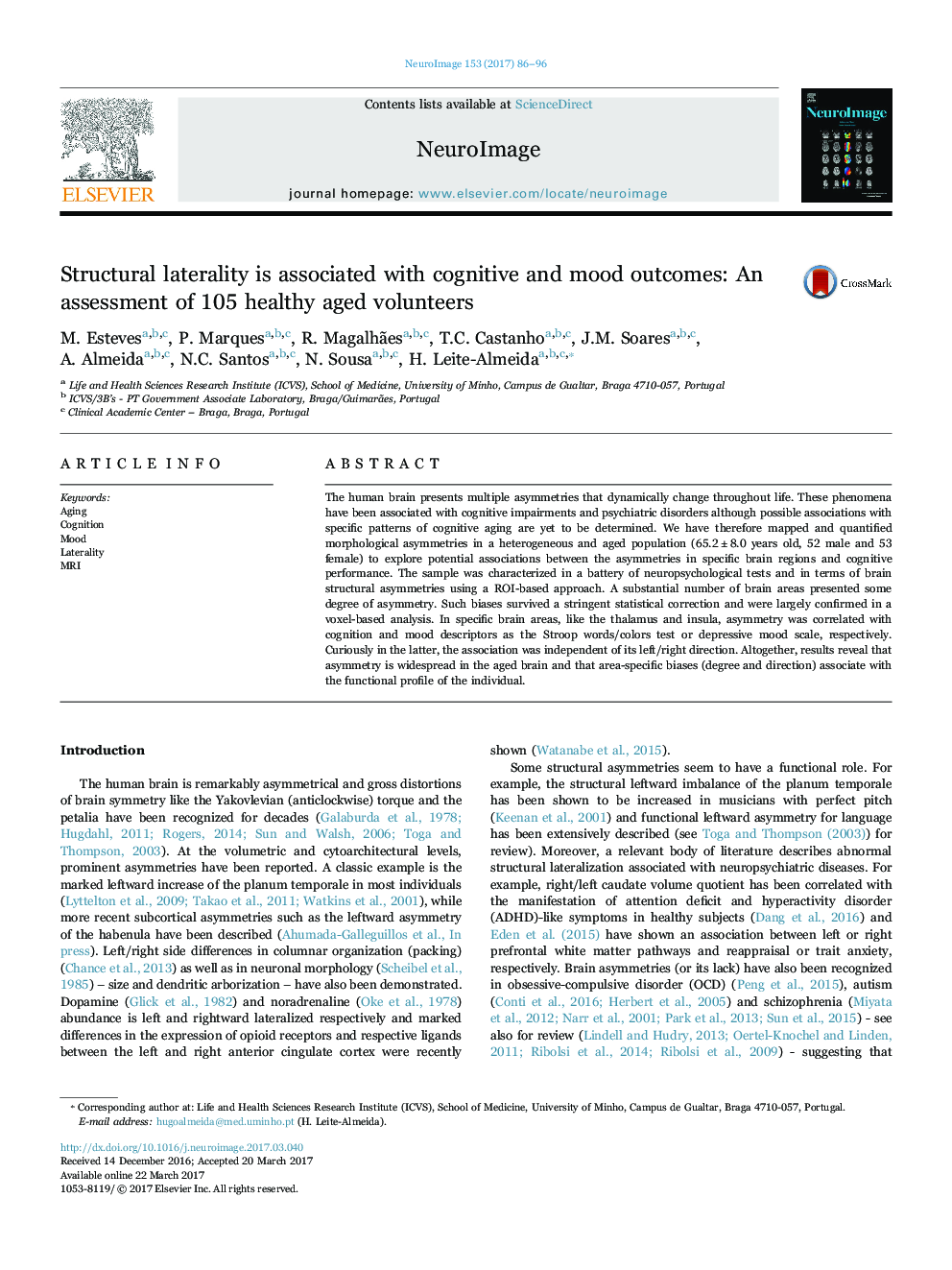| Article ID | Journal | Published Year | Pages | File Type |
|---|---|---|---|---|
| 5631084 | NeuroImage | 2017 | 11 Pages |
â¢The aged brain presents ubiquitous structural asymmetries.â¢Age, education and cognitive performance group do not influence asymmetries.â¢Sex affects laterality only in the fusiform gyrus.â¢In specific brain areas (a)symmetry associates with cognitive and mood outcomes.â¢Cognition is better explained by laterality than by absolute left or right volumes.
The human brain presents multiple asymmetries that dynamically change throughout life. These phenomena have been associated with cognitive impairments and psychiatric disorders although possible associations with specific patterns of cognitive aging are yet to be determined. We have therefore mapped and quantified morphological asymmetries in a heterogeneous and aged population (65.2±8.0 years old, 52 male and 53 female) to explore potential associations between the asymmetries in specific brain regions and cognitive performance. The sample was characterized in a battery of neuropsychological tests and in terms of brain structural asymmetries using a ROI-based approach. A substantial number of brain areas presented some degree of asymmetry. Such biases survived a stringent statistical correction and were largely confirmed in a voxel-based analysis. In specific brain areas, like the thalamus and insula, asymmetry was correlated with cognition and mood descriptors as the Stroop words/colors test or depressive mood scale, respectively. Curiously in the latter, the association was independent of its left/right direction. Altogether, results reveal that asymmetry is widespread in the aged brain and that area-specific biases (degree and direction) associate with the functional profile of the individual.
Graphical abstractDownload high-res image (237KB)Download full-size image
